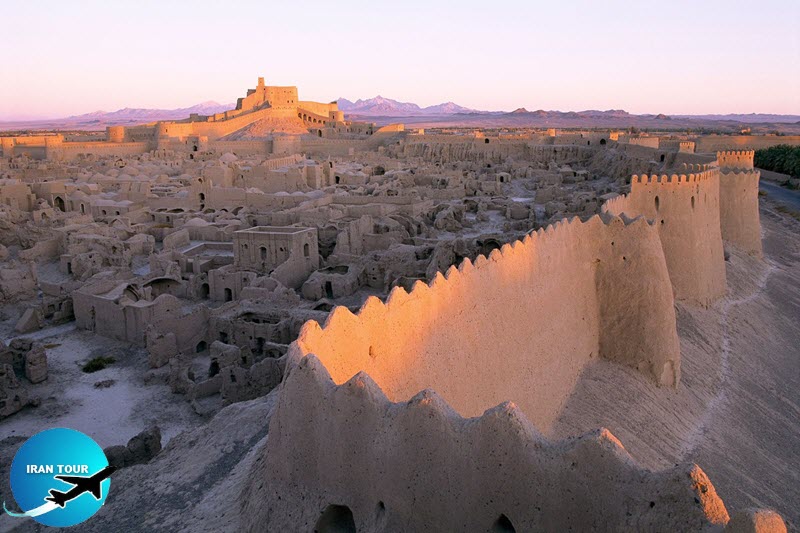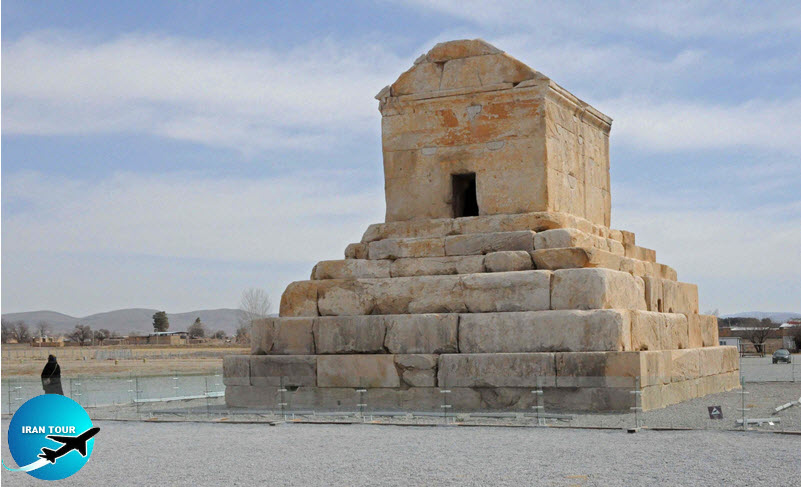Copyright 2020 - 2021 irantour.tours all right reserved
Designed by Behsazanhost
Historical works that introduced Iran to tourists
Historical works that introduced Iran to tourists
Iran with more than 12,000 years old history and with more than 1,000,000 historical sites is one of the oldest countries in the world. 23 of Iran historical sites and also 1 Natural site recorded in UNESCO. Also, some Iranian historical sites are waiting to record at UNESCO.
Here is the list of the top 10 historical sites of Iran at UNESCO.
 |
1-Tchogha Zanbil. Khuzestan Province
Tchogha Zanbil is an ancient sanctuary built at the time of Ilam (Elamites) and about 1250 BC. Tchogha Zanbil is a part of the city of Dur Untash, located near Shush or Susa (ancient city) in Khuzestan province. In 1979, this structure was the first Iranian monument to be listed on the UNESCO World Heritage List. It has exceptional and universal value. The orientalists considered the Tchogha Zanbil as the first Iranian religious building. The ziggurat(Tchogha Zanbil) considered being the best-preserved example of the stepped pyramidal monument by UNESCO. In 1979, Chogha Zanbil became the first Iranian site to be inscribed on the UNESCO World Heritage List.
 |
2-Persepolis. Shiraz
Persepolis includes a collection of royal palaces built during the Achaemenid times. The complex consists of 8 palaces and some other buildings. The construction of these palaces started at 512 BC and lasted for 150 years. The English word Persepolis taken from Greek words, Pérses and pólis, meaning "the Persian city" or "the city of the Persians". The Achaemenid architecture is a kind of combination and invention that has adapted from the architectural style of Babylonia, Assyria and Egypt, and the Greek cities of Asia Minor and the Urartu people.
 |
3- Naqsh e Jahan Square. Isfahan
Naqsh e Jahan Square also known as Meidan Emam is the largest sq at the time of the Safavid dynasty(1502–1736). It Constructed between 1598 and 1629, it is now an important historical site, and one of UNESCO's World Heritage Sites. It is 160 metres (520 ft) wide by 560 metres (1,840 ft) long(an area of 89,600 square metres (964,000 sq ft). This sq decorated with the best of Isfahan's historical sites. On the north the Isfahan Grand Bazaar which derived from Ottoman Bazars, in the south one of the most beautiful Iran mosques Imam mosque or Jame Abbassi mosque, also on the two sides of sq you can see two of the best Isfahan's monuments Ali Ghapoo palace and Sheikh Lotfolah mosque. This sq is now as the most famous historical site in Iran that all the tourists of Isfahan visit it.
 |
4- Takht e Soleyman.Takab. West Azarbaijan
Takht e Soleyman also known as Azar Goshnasp literally "the Fire of the Warriors", is an archaeological site in West Azarbaijan, Iran. This is the biggest and most famous fire temple of Zoroastrian people. This historic place has been one of the most prominent Sassanid period fire temples. The remains of this place converted into a mosque during the Ilkhan period. This site got its biblical name after the Arab conquest.
 |
5- Arg e Bam.Kerman
Bam is the largest brick building in the world.
The origin of this huge and valuable citadel on the Silk Road can be back to the Achaemenid Empire and even beyond. The area of this citadel is nearly 180,000 square meters, surrounded by walls 6 to 7 meters high and 1815 meters in length. This historic castle has different sections as a Military section, ruler home, Bazaar, public Bath, School, Mosque, and other sections.
 |
6- Pasargadae
Pasargadae was the capital of the Achaemenid Empire under Cyrus the Great, who had issued its construction (559-530 BC). It is also his tomb. This historical collection includes some remaining monuments of the Achaemenid period. Some of these works include the Cyrus Tomb, garden, royal palaces, and also a number of historical monuments that have been added in the following periods. In 529 BC, Cyrus attacked the tribes of the Scythians in Central Asia (northeastern Iran) and was killed in the Massage at war. He was buried in Pasargad.
 |
7- Soltaniyeh dome.Zanjan province
The largest dome of the world during the rule of the Ilkhanis over Iran. It is now the second-largest dome in the world after the dome of the Santa Maria del Fiore Church in Italy. It is located at 240 Km of Tehran and was built as the capital of the
 |
8- Bisotun.Hamadan
The inscription of Behistun is a multilingual inscription and a large rock relief on a cliff on Mount Behistun in the province of Kermanshah. Bisotun inscription is the world's largest stone inscription the first well-known Iranian text and one of the most famous Bas-relief of the Achaemenid dynasty (520 BC). This is ordered by Darius the Great between his coronation as king of the Persian Empire in the summer of 522 BC and his death in autumn of 486 BC, the inscription begins with a brief autobiography of Darius, including his ancestry and lineage.
 |
9- Armenian Monastic Ensembles of Iran
The Armenian Monastic Ensembles of Iran, located in the West Azerbaijan and East Azerbaijan provinces in Iran, is an ensemble of three Armenian churches that established during the period between the 7th and 14th centuries A.D. The complex consists of 3 famous churches including St. Thaddeus Monastery, the Saint Stepan Monastery, and the Chapel of Dzordzor.
The three monasteries of the ensemble inscribed in 2008 under UNESCO criteria and for their outstanding value in showcasing Armenian architectural and decorative traditions, for being a major center for the diffusion of Armenian culture in the region, and for being a place of pilgrimage of the apostle St. Thaddeus, a key figure in Armenian religious traditions.
 |
10- Shushtar Historical Hydraulic System. Sushtar.Khuzestan Province
Shushtar Historical Hydraulic System has remained from the Sassanid era with a complex irrigation system. Shushtar's infrastructure included water mills, dams, tunnels, and canals. The GarGar weir was built in watermills and waterfalls. Shushtar aquatic structures during the Sassanian era constructed to use water as a stimulus for industrial mills. The Shushtar Historical Hydraulic System is one of the most unique examples used for optimal water use in ancient times.
- Details
- Category: What to see in IRAN